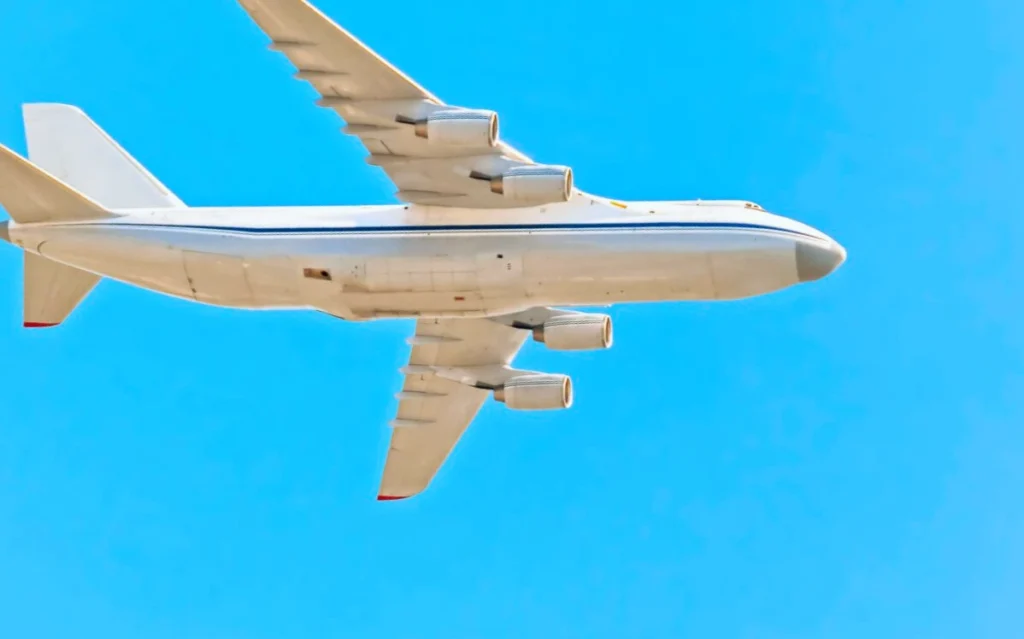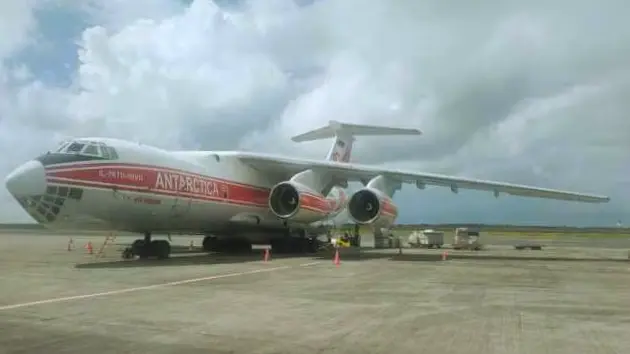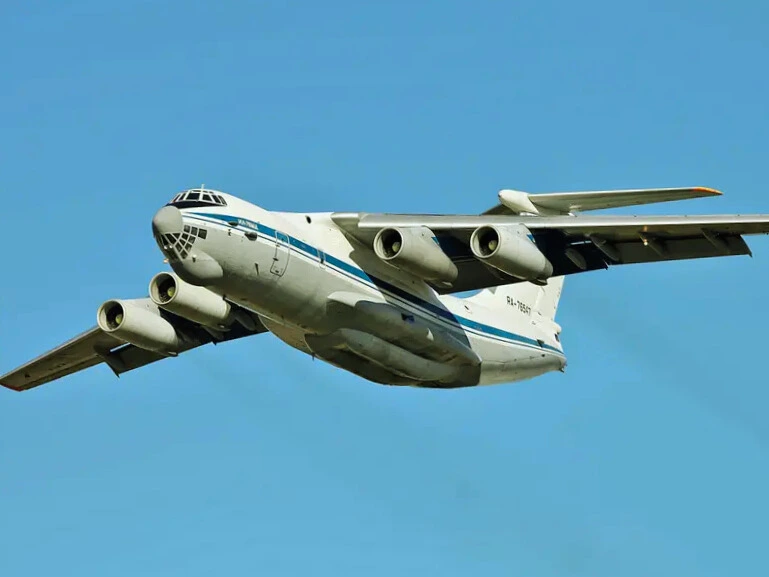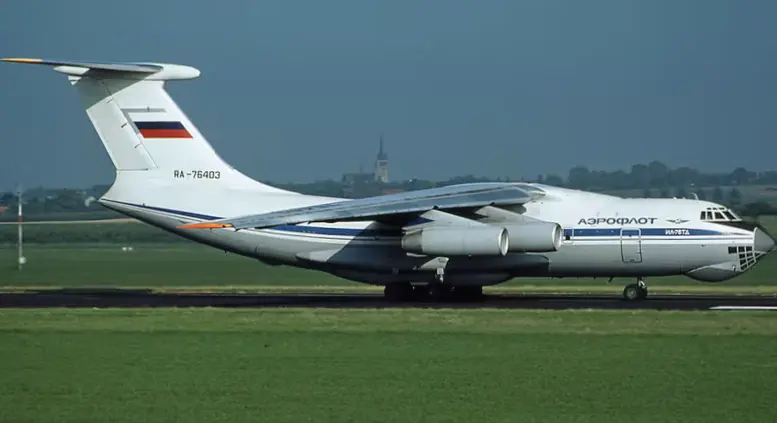Beginning-The Global Attention on Russian Cargo Planes
In 2025, the Russian cargo plane once again caught the world’s attention, from diplomatic storms in South Africa to scientific expeditions in Antarctica. These planes used to be symbols of Soviet engineering and global logistics, but now they are at the centre of political debates, trade tensions, and technological changes around the world.
What really happened with South Africa’s permission for a Russian cargo plane to land
The flight and the way it went. An Ilyushin IL-76 owned by Abakan Air in Moscow flew from Dar es Salaam to Upington (Northern Cape), then stopped at Lanseria Airport near Johannesburg to fill up. It was said to have come with a lot of cargo and left with none, which made people more curious about what was unloaded.
The licence. The South African Department of Transport says that Abakan Air applied for a Foreign Operator Permit on September 9, 2025, and got it on September 23, 2025. The stated goal is to “move general cargo, civilian helicopters, and acrobatic planes.”
The important quote. Collen Msibi, a spokesperson for the department,
“It is also important to note that the South African government has not put the operator on a blacklist. We also don’t know or have received any information from any other government that this operator has been blacklisted.
DIRCO spokesperson Chris Phiri wouldn’t say if foreign affairs was involved and told people to ask Transport instead.
The context of sanctions. The US Treasury’s OFAC named Abakan Air in June 2024 as the company that would transport Russian military equipment and help Russia’s defence industrial base during the war in Ukraine. FlightRadar24 trails also showed that the plane had been in Iran for a long time before going to South Africa.
What experts think. Dr. Noluthando Phungula, an expert on international relations, said that the move would make US President Donald Trump angry. She said that it would be a clear challenge to Western dominance, which is exactly what Washington doesn’t like.
Why timing is important. The landing happened after the African Growth and Opportunity Act (AGOA) ran out. Since then, the US has
- Stopped sending aid to South Africa;
- The highest tariffs in sub-Saharan Africa, up to 30%, were put in place as punishment.
- Floated a bill to review ties between the two countries, saying that Pretoria is too close to Russia, China, and Iran (including the US’s “great concern” over SANDF Chief Gen. Rudzani Maphwanya’s visit to Iran in August).
- In the meantime, Pretoria is pushing for the renewal of AGOA and an end to the new tariff wall.
Note about financial risk. Abakan Air is on debt watchlists because it owes money for fuel and aviation services. This is a big red flag for any airport or handler that is thinking about giving them credit.

The Lady R Incident-What Happened Next in Diplomacy
International relations experts said that letting a sanctioned Russian cargo plane land in South Africa could put the country’s trade access to the US at risk again, just like it did after the 2022 scandal. That earlier event led to a US investigation into claims of weapons shipments, caused the rand to fall to record lows, and almost stopped the African Growth and Opportunity Act (AGOA) trade benefits.
The situation is very similar today. The Trump administration has put 30% punitive tariffs on South Africa and stopped US aid to the country because it is becoming more aligned with Russia, China, and Iran.
Experts say that the IL-76’s landing, which happened just days after AGOA ended, could make trade between the two countries worse. American lawmakers are now thinking about passing a law that would review all diplomatic and economic ties with Pretoria. This shows how one Russian cargo plane landing has affected diplomacy around the world.
Abakan Air’s problems with money and operations
Abakan Air has problems with its operations that go beyond politics. The company is on debt watchlists because it hasn’t paid its bills for fuel and aviation services on time. Reports say that its planes were in Iran for months before their flight to South Africa.
For Russia, these kinds of transport companies are very important for getting around Western sanctions. But allowing them to operate could put countries that do so at risk of diplomatic isolation, especially those trying to keep good relations between the Global South and Western alliances.
India’s Antarctic Mission with a Russian Cargo Plane
South Africa’s case got a lot of political criticism, but India’s choice to use a Russian IL-76 cargo plane was praised for how well it worked. An IL-76 operated by the Dronning Maud Land Air Network (DROMLAN) left Goa’s Manohar International Airport on October 2, 2025, carrying 18 tonnes of scientific tools, medicines, and supplies to India’s Antarctic research bases, Bharati and Maitri.
This was India’s first direct air cargo mission to Antarctica, which cut months off of traditional sea routes. The flight path included a stop in Cape Town, South Africa, to refuel on the way to the cold continent.
Officials from the National Centre for Polar and Ocean Research (NCPOR) said that India had to look into air transport even though it was expensive because of repeated supply chain problems after COVID-19. The IL-76 was one of the few planes that could safely land on Antarctic runways because it had blue-ice landing gear and low-pressure tires.
Dr. Thamban Meloth, the director of NCPOR, said that air freight would not completely replace shipping, but it was an important option in times of unstable geopolitics and unreliable maritime approvals.

Aeroflot takes apart cargo planes to get spare parts
In the meantime, Aeroflot, Russia’s national airline, is dealing with a very different problem in Moscow. The airline has started taking apart eight Boeing cargo planes for spare parts because the West has stopped doing business with them and they can’t get parts from Boeing and Airbus. This shows how sanctions are still hurting the Russian aviation industry.
The $130 million deal, according to Ukraine’s Foreign Intelligence Service, involves six Boeing 737-800BCF and two Boeing 747-400 planes that were given to Aeroflot subsidiaries Pobeda and Rossiya Airlines through financial leasing deals paid for by Russia’s National Welfare Fund.
This is the first time a Russian passenger airline has taken apart cargo jets to keep its passenger fleet in good condition. This shows how badly sanctions have hurt maintenance and parts access. Since 2022, Russia has not been able to get parts made in the West. This has forced airlines to “cannibalise” grounded planes for usable parts, which is dangerous for safety and reliability in the long run.
READ MORE : Sanctions Bite Hard: Aeroflot’s $130 Million Fleet Now a Source of Scrap
The History of Russian Cargo Planes-From the Mriya to Today
People have always been interested in Russian cargo planes around the world. The Antonov An-225 Mriya, which was the largest plane ever built, is still a symbol of Soviet engineering genius. It could carry 250 tonnes of cargo, from tanks to turbines, thanks to its six engines and maximum take-off weight of 640 tonnes.
The Mriya was destroyed in the 2022 Battle of Hostomel, and its loss was a sad reminder of how war and aviation can come together. Ukraine has since promised to rebuild it using an unfinished second fuselage. President Volodymyr Zelensky called the project “a question of ambition.”
The Antonov An-124 Ruslan, another heavy-lifter built in Ukraine but run by Russia, is now the world’s largest working cargo plane. It is often used for military and humanitarian missions.
In the future, the U.S. Radia Windrunner project wants to make a new kind of aviation giant, but not for war—only for the environment. The 108-meter-long plane will carry wind-turbine blades and parts for renewable energy. This shows how global aviation is changing since the Cold War, when planes were made of heavy metal.

Why the Russian cargo plane is important for trade, safety, and science in 2025
- Trade diplomacy: One sanctioned Russian cargo plane landing can change tariffs, aid, and market access. South Africa is seeing this with AGOA and US scrutiny.
- Security and alignment: Clearances for overflights and landings show which camp you’re in (or trying not to be in). It’s clear now in parliamentary debates and think-tank memos that there is a BRICS vs. West framing.
- Science logistics: India’s IL-76 Antarctic mission shows why countries still use Russian cargo planes in places where blue-ice capability and strength are more important than branding.
- Aeroflot’s cannibalization shows how sanctions change the economics of safety, fleet size, and route maps. This is not just an abstract policy; it also changes maintenance hangars and passenger schedules.
Conclusion-The Russian Cargo Plane’s Two-Fold Role
The Russian cargo plane has once again become a symbol of global conflict and dependence, whether it is carrying scientific payloads or causing diplomatic problems.
It caused worries about trade and politics in South Africa. It helped science move forward in India. It became a sign of industrial limits in Russia. These stories show how one type of plane now represents the world’s competing goals of security, science, and survival.
As countries deal with sanctions, changes in energy sources, and rivalries in the world of politics, the skies are still a stage where every Russian cargo plane flight has effects that go beyond its cargo.
READ MORE : NRL Grand Final 2025-Storm vs Broncos Ignite Sydney in an Epic Showdown
